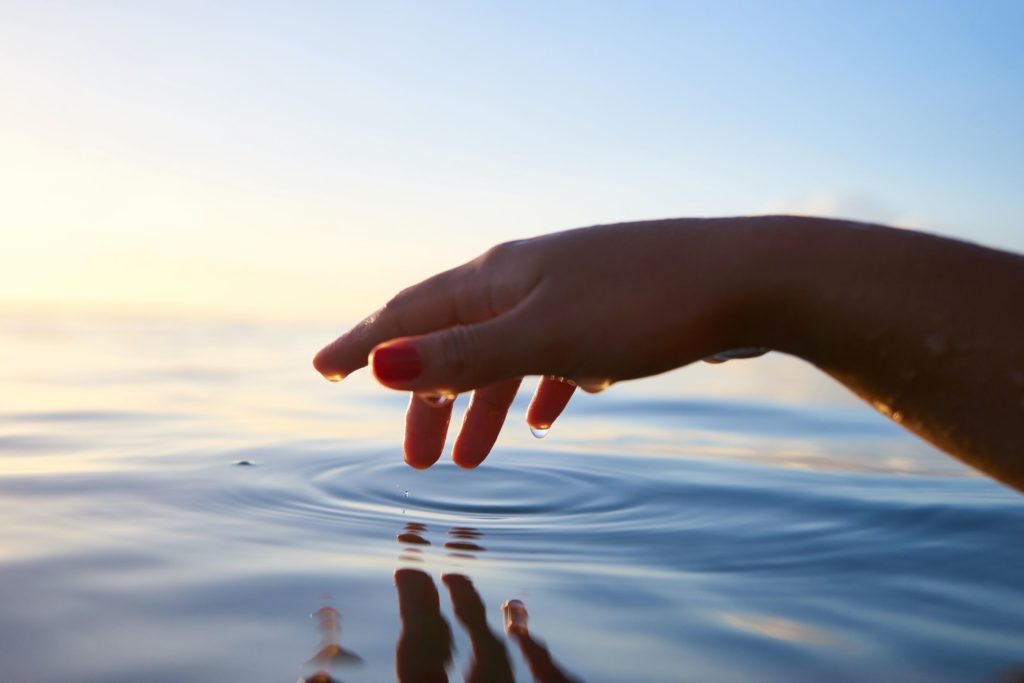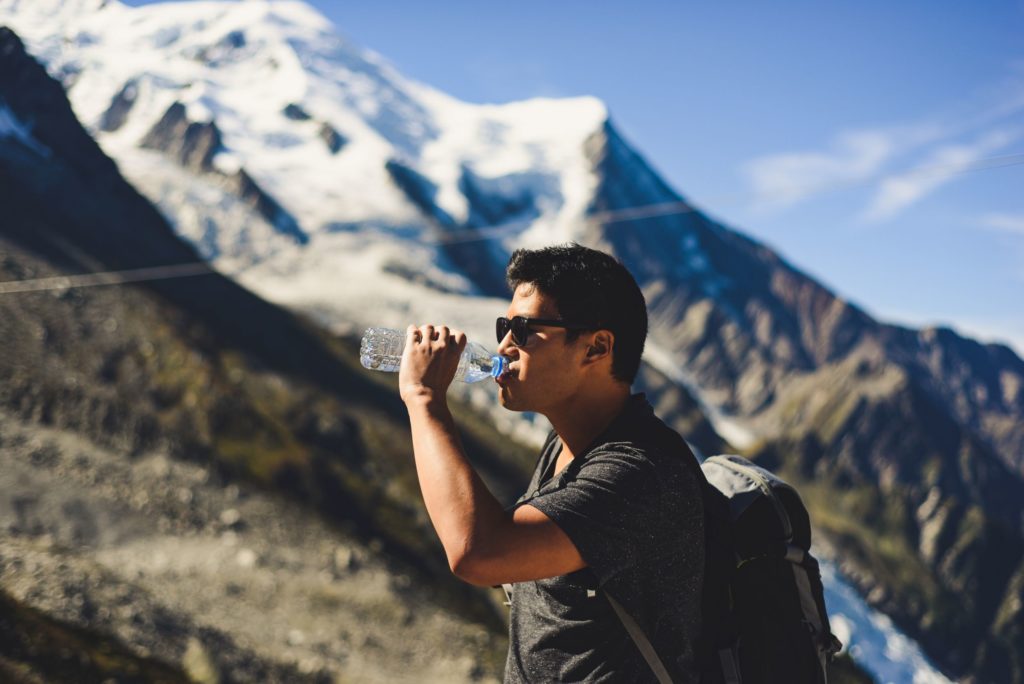
10 things you always wanted to ask about water
Q.1.Why do we need water?
- The main objective of the water is to provide the amount of water that a person needs on an individual basis to maintain a perfect equilibrium in the body, which results in improved health.
- If you do not drink enough water, your body will not have the water necessary to accomplish its basic functions.
- We need water for everything. The water gives you direction how your body functions in utilizing carbohydrates and fats as sources of energy.
Q.2.What is the body water content?
- Water is actually the most important constituent of the body, accounting for 70 percent of the human body’s composition.
- A human body weighing around 70 Kgs therefore consists of some 48 Kgs of fluids (in the form of blood, lymph, and cellular fluids), representing a little over two thirds of the body’s entire weight. The solid part of the body consists of only about 20 Kgs.
| Age | Water content (%) |
| Newborn | 80 |
| Child | 75 |
| Adult | 70 |
| Elderly | 60 |
Q.3.What are the key functions performed by water?

| Energetic | By entering and exiting the cells, water produces hydroelectric energy that is stored in the form of adenosine triphosphate or ATP. |
| Hydrolytic | Water triggers chemical reactions by decomposing the substances suspended in it. |
| Activating/inhibiting | The thicker body fluids become, the more slowly biological reactions take place, which means that a sufficient intake of liquid enables the body’s organic “motor” to resume its normal operating speed. |
| Eliminatory | The purification of the blood by the kidneys occurs because of the pressure applied to the renal filter by the liquid carried there by the renal artery. |
| Thermoregulatory | When water evaporates on the skin, it cools the body. |
| Circulatory | The quantity of water in the body regulates blood pressure and the movement of the blood. |
| Osmotic | The numerous exchanges that take place between the inside and outside of the cells occur as a result of the different pressures applied by the fluids located in various parts of the cellular membranes. |
Q.4. What are the key sources of water intake in the body?
| Area | Absorption | Detail Process |
| The mouth is Key source | 2.5 litres | This liquid can be in a free form or bound with other substances. Freeform is the liquid we ingest by itself or combined with substances. Water bound with other substances refers to water that is naturally part of the tissues of the solid foods we eat, such as the juice contained in the pulp of fruits and vegetables. |
| Metabolic Fluid | 0.3 Litres | The metabolic fluid does not come from outside the body but from within. The body itself produces it, not from the water contained in foods, but by using the solid components of the foods ingested. Metabolic fluid is produced by the transformation of fats and carbohydrates into energy. This includes carbon dioxide (CO2) and water (H2O). |
| Lungs | Negligible | Water suspended in the air in the form of invisible vapour makes contact with the mucous membranes when the air is inhaled. Absorption of the humidity of the air takes place around the level of the alveoli, although not much water is taken in in this manner. The absorption process occurs passively and is not highly developed in human beings. Some insects, in contrast, fill an appreciable portion of their water requirements by drawing the water held by the air through their respiratory tracts, and they are able to do this even when the relative humidity of the air is quite low. |
| Skin | Negligible | The skin also provides a means for water to enter the body. There are some therapies that take advantage of the skin’s capacity to absorb water. For example, it is used as a complementary means of rehydrating individuals who are suffering from sunstroke and have lost large quantities of bodily fluid and salt through sweat. |
Q.5.How water is eliminated from the body?
| Area | Elimination | Detail Process |
| Kidneys | 1 to 1.5 Litres | When it passes through the renal glomeruli (the small filters that make up the kidneys), a portion of the water contained in the blood is removed along with various solid wastes (worn-out minerals, uric acids, urea, and so forth). Together, this water and these solid substances compose the urine. Urine is 95 per cent water and 5 per cent solids. |
| Skin | In active person -540 gms/24 Hrs. Intense activity -1 litre/hour. In sauna-1.2 litres/half hour. Patinets-5 to 6 Litres /day. | Sweat is composed of 99 per cent water and 1 per cent solid substances. The latter are worn-out minerals (sodium, phosphorus, and so forth) or organic wastes (urea, uric acid, and others). Sweat eliminates the same wastes as the kidneys but in a less concentrated form. It regulates the body temperature when it has risen too steeply due to ambient heat, physical exertion, or fever. The evaporation of the water on the surface of the skin removes heat from the body and cools it down. |
| Lungs | 300 to 500 gms /day. | When we exhale, a certain amount of liquid leaves the body in the form of vapour. |
| Intestines | 150 Gms /day | Through stools. |
Q.6.Relation between digestive tract, water and bodily functions?
- Digestive glands obtain the water they need from the blood. The amount of this water withdrawal is substantial .
- Although these secretions are created at the expense of the water in the blood, the blood volume is not reduced. The blood rebuilds itself from the liquid provided by drinks and foods, as well as what is provided by the digestive tract itself.
- Digestive juices used to break down and liquefy foods are not eliminated with the stools at the end of the digestive process but are in large part reabsorbed by the mucous membranes of the small intestine and colon.
- Of the 7 litres of water provided to produce the digestive juices, 6.88 liters (or 97 percent of the total volume) is reabsorbed by the intestinal mucous membranes and fed into the blood so that it can be reutilized elsewhere in the body.
- In reality, the reabsorption by the digestive tract is higher. It carries not only the 6.88 liters of digestive juices brought there every day, but also the 1.2 liters of water that is drunk directly and the liter of water that comes in bound to foods.
HYDRIC BALANCE SHEET OF THE DIGESTIVE TRACT
| Water | Intake | Output | qty |
| Bound water | 1.0 | Water in the stools | 0.1 |
| Drinks | 1.2 | Reabsorbed water | 9.1 |
| Salvia | 1.0 | ||
| Gastric Juices | 1.5 | ||
| Pancreatic juices | 0.75 | ||
| Bile | 0.75 | ||
| Intestinal juices | 3.0 | ||
| Total | 9.2 | 9.2 |
Q.7.What are the Key Medical benefits of taking water in adequate amounts?

| Function | Benefit explained |
| Maintaining body functions. | The body uses water in and around body cells and tissues to regulate body temperature; create blood, lymph, and body secretions; digest food; dissolve and circulate nutrients; eliminate waste, and lubricate joints |
| Protection against dental cavities. | Fluoridated drinking water provides fluoride ions that are incorporated into the crystalline structure of dental enamel, hardening the tooth surface and making it more resistant to bacteria such as Mutans streptococcus, a type of bacteria that live in sticky dental plaque. |
| Relief from constipation | Water bulks up stool and moves it more quickly and easily through your body; a glass of warm water first thing in the morning stimulates gastric juices and exerts a mild laxative effect. |
| Relief from stuffed nose caused by cold or seasonal allergy | Warm beverages loosen mucous, making it easier to clear your nasal passages. |
| Prevention of heat-related illness. | Heatstroke is a medical emergency caused by dehydration resulting from the failure to replace fluids lost through excess perspiration. Drinking adequate amounts of water while exercising or working in a hot environment reduces (but does not entirely eliminate) the risk of heatstroke. |
| Antacid, diuretic, and laxative effects. | Mineral waters are natural mild diuretics and because they contain sodium bicarbonate, naturally antacid. Any kind of water, taken warm about a half-hour before breakfast, appears to be mildly laxative, perhaps because it stimulates contractions of the muscles in the digestive tract. |
Q.8.What are key nutrients in water?
Water has no nutrients other than the minerals it picks up from the earth or the pipes through which it flows or that are added by a bottler to give the water a specific flavour. Hard water contains dissolved calcium and magnesium salts, usually in the form of bicarbonates, sulphates, and chlorides. Soft water has very little calcium and magnesium, but it may still contain sodium.
Q.9.What are different types of water found for drinking?
| Types | Details |
| Distilled water | Distilled water is vaporized, condensed, and collected free of any impurities. |
| Springwater | Springwater is water that flows up to the earth’s surface on its own from an underground spring. |
| Well water | Well, water is water that must be reached through a hole drilled into the ground. |
| Naturally, sparkling water | is spring water with naturally occurring carbon dioxide. |
| Sparkling water | artificially carbonated with added carbon dioxide |
| Club soda | is sparkling water flavoured with salts, including sodium bicarbonate? |
Q.10.What will happen if I start drinking around 2 to 3 litres of water every day.
- Energy level will increase , you will fell lighter and look thinner.
- Body pains like low body pain , Rheumatoid Joint Pain, Migraine etc will reduce in significant manner.
- Depression, Chronic Fatigue Syndrome, Lupus, Multiple Sclerosis, Muscular Dystrophy will improve for better.
- Heartburn is a signal of water shortage in the upper part of the gastrointestinal tract. It is a major thirst signal of the human body. Drinking water in adequate manner will help in reducing heartburn.
- Type 2 Diabetes -To have adequate water in circulation and for the brains priority water needs, the release of insulin is inhibited to prevent insulin from pushing water into all body cells. In diabetes, only some cells get survival rations of water. Water and some salt will reverse adult-onset diabetes in its early stages.
- Hypertension -Hypertension is a state of adaptation of the body to a generalized drought, when there is not enough water to fill all the blood vessels that facilitate the normal diffusion of water into vital cells. The rise in pressure is a part of the mechanism of reverse osmosis; water from the blood serum is filtered and injected into important cells through minute holes in their membranes; extra pressure is needed for the “injection process.” Just as we inject I.V “water” in hospitals, so the body injects water into tens of trillions of cells all at the same time. Water and some salt intake will bring blood pressure back to normal.
- Obesity :Extra weigh will be reduced by 8 to 10 kgs in 6 month period if the water take is adequate. Weight management will be idle as per the body structure.